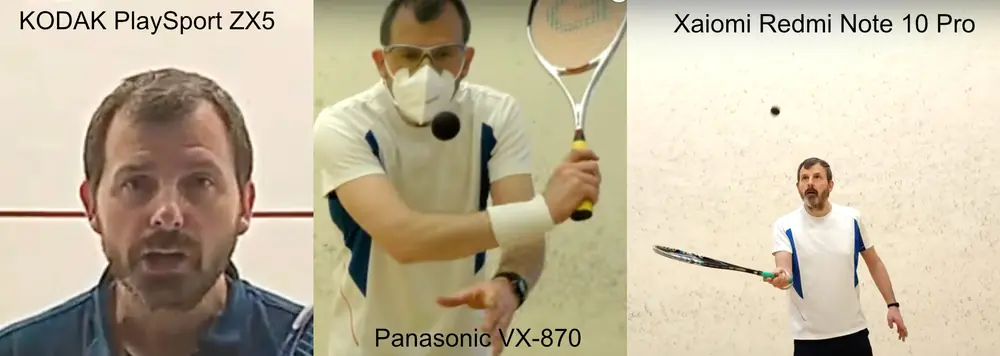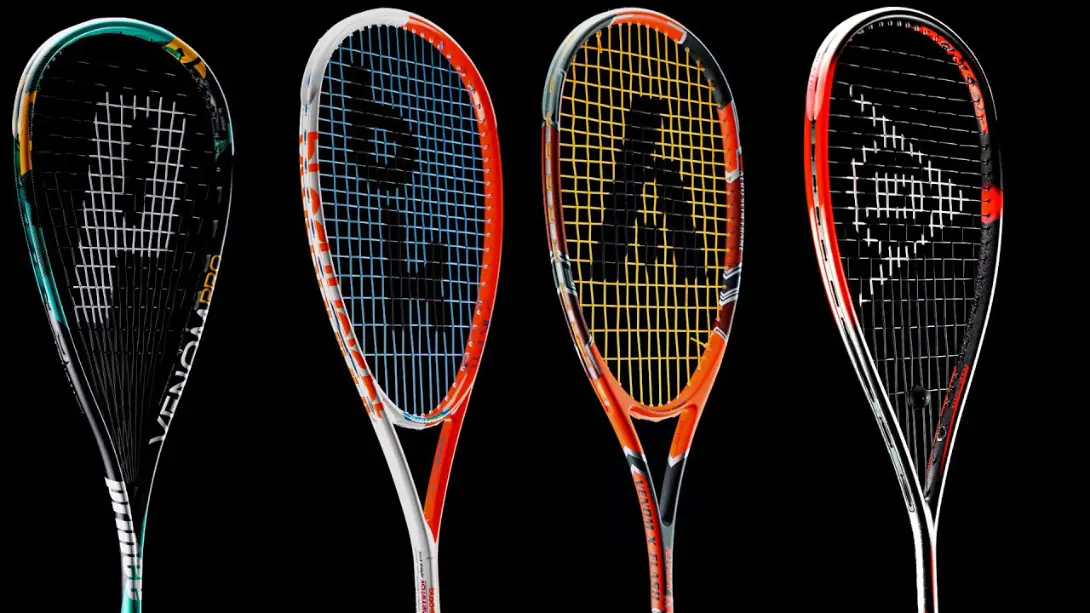26 October 2022 / 3-Min Read / Translate
This topic seems to be one of my favourite because I keep writing about it. In case you haven’t guessed or in case you didn’t read the intro: Beginners spend way too much time and effort worrying about squash rackets. But today, I realised that I am just like new squash players worrying about which racket brand, model, weight, balance, string and string tension. And I realised it because I do the same with video cameras. Let me explain.
I started making squash videos back in 2013. I came back into squash after a long break and wanted to “give back” to the sport I love so much. I didn’t want to spend a lot of money of equipment in case making videos wasn’t like I hoped, so I bought a Kodak ZX5 PlaySport for about 100 Euros. Then after a few years, I decided to invest in something better, so I bought a 500 Euro 4k Panasonic camcorder. Now, I’m dreaming about the latest Sony FX30 (about 2,500 Euros with a basic lens).

The above image is not a perfect or even fair representation of the actual quality of the cameras, but clearly the phone is good enough.
The problem is that my actual technical knowledge has hardly increased since the first videos. Yes, I definitely have a better understanding of basics like shutter speed, frame rate etc, but after almost 10 years making videos, I’m really not as good as I should be. Therefore, any camera I get above a point and shoot would be wasted on me, unless I actively begin to learn some skills.
Even if I could afford that Sony FX30, I wouldn’t be able to really use it to its potential. And in my particular case, with the terrible lightning the squash court I use to record has and the limited scope for “quality” would it really make any or much difference? No. But it doesn’t stop my wanting one, or reading the reviews and dreaming.
Like beginners who first start to play squash, or even improvers, I want the quick and easy route; the route that requires the least amount of effort, but ultimately won’t really bring any long term benefits. I have little doubt that an experienced videographer could take my Panasonic or phone and record better videos than I can.
What I need to do is plan my videos better, do more takes from different angles, write and fix the script before I even walk onto court. Then, even average video quality could result in great squash coaching videos. What YOU need to do is worry more about becoming a better, fitter squash player, not worrying about whether the main and cross strings need to be different tensions or if a 135 gram racket is better for your attacking game than a 145 gram racket.

Which rackets is the best for you? Honestly, does it really matter if your swing is not optimised?
It’s all unimportant when it comes down to playing good, sensible squash. It’s been said before: a pro with a wooden racket would still beat 99% of non-pros. But you are not a pro! I know it. You know it. So what’s wrong with wanting to find even a small advantage over your opponent? Who has time to spend solo drilling and fitness training? Not most club players, that’s for sure.
Is worrying about squash rackets so bad, even if you might not be able to play any better? No, of course not. But know this: You’ll never really improve unless you improve your skills and ability. Squash rackets, like cameras, are just tools, and even a 10,000 Euro camera won’t make my videos better, just clearer.
By all means, spend time and effort learning more about racket frames, weights, balances and strings, but bear in mind, having a bad swing will always be your limiting factor.